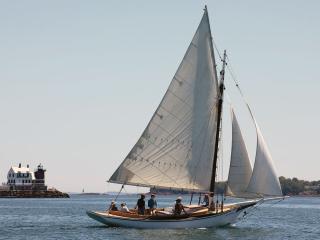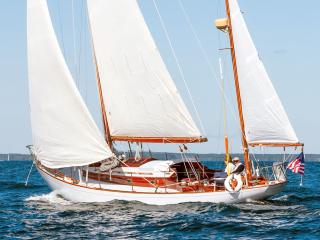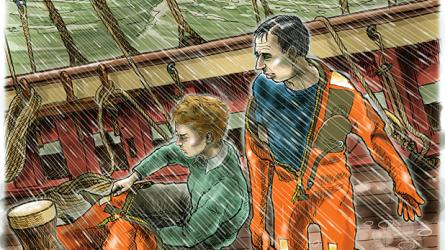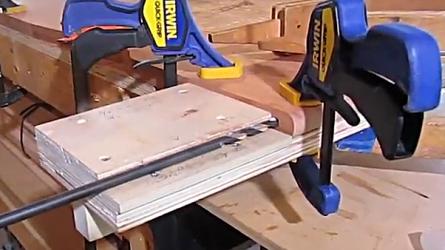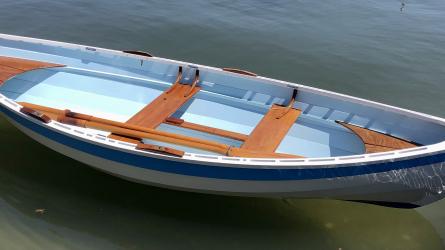September / October 2019
The Strength of Scarf Joints
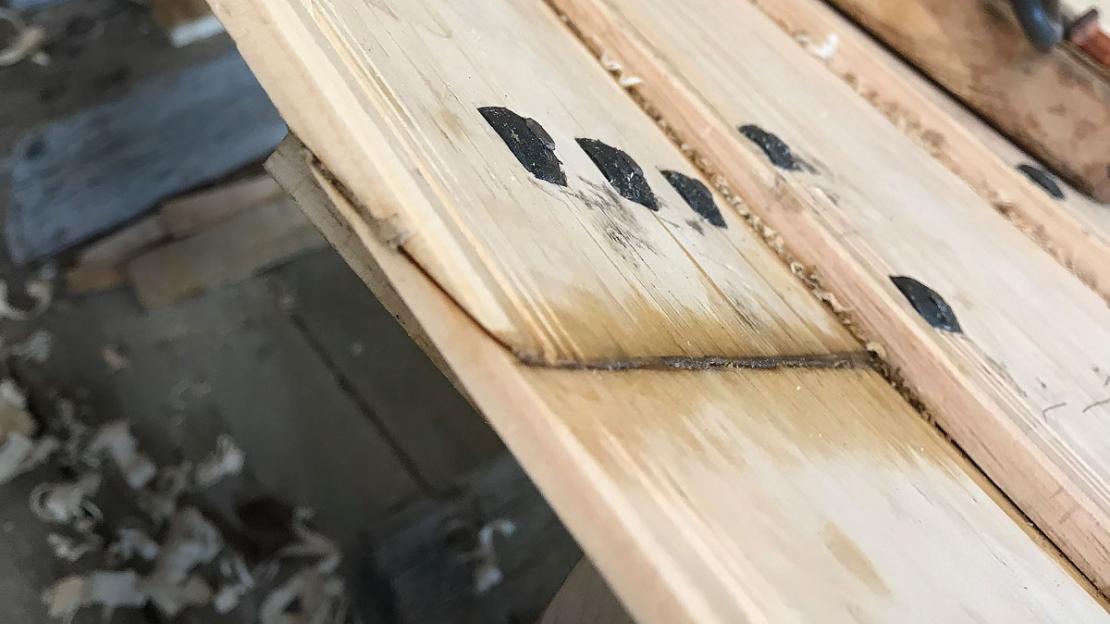
Scarf joints such as this short, riveted-together one in a Norwegian faering have been used for centuries in wooden boat building. In contemporary construction, glue replaces such mechanical fastenings. Long-established conventions guide the angles used for various scarf applications, but with little hard data on their comparative strengths.
Scarf joints have been used in wooden boat construction for centuries. There are many variations on the basic scarf joint; these include feathered, nibbed, and hooked scarfs. And there are many applications for them, from joining together planks to making up full-length mast staves from shorter pieces. With advances in structural engineering leading to progressively lighter boats—coupled with significant progress in adhesives—the mechanical properties and strength of glued scarf joints compared to solid timber must be fully understood.
Scarfs are defined by the length of their slopes in relation to the thickness of the pieces being joined together; this relationship is described as a simple ratio—for example, a 4:1 scarf in a 1"-thick piece would have a slope length of 4", measured parallel to the timber’s surface. Traditionally, scarf ratios have been driven by the location of the scarf: 4:1 for planks, 6:1 (possibly 8:1) for keels, and 12:1 for spars. The old Lloyd’s of London rules state that plank scarfs should not have a length-to-thickness ratio less than 4:1, adjacent planks should not have scarfs within 1.2m of each other (about 4'), and a minimum of three complete planks should separate scarfs in the same transverse plane. In addition, keel scarfs should have a ratio no less than 6:1, and the keel and hog scarfs should be spaced by at least 1.5m (about 5'), while being clear of engine bedlogs and maststeps. In those historical instances, it can be deduced that an increased scarf ratio leads to greater strength but that scarfs still represent weak spots that should be spaced out and not subjected to high localized loads. Richard Birmingham, in his book Boat Building Techniques, states that the efficiency of scarfs ranges from 65 percent of the strength of solid timber for a 4:1 ratio and up to 95 percent for a 20:1 ratio.The source of these values is not clear, nor is their accuracy when utilizing various glues and wood species.
To read the rest of this article:
Click the button below to log into your Digital Issue Access account.
No digital access? Subscribe or upgrade to a WoodenBoat Digital Subscription and finish reading this article as well as every article we have published for the past 50+ years.
ACCESS TO EXPERIENCE
2-for-1 Print & Digital Subscription Offer
For this holiday season, WoodenBoat is offering our best buy one, get one deal ever. Subscribe with a print & digital subscription for $42.95, and we’ll give you a FREE GIFT SUBSCRIPTION to share with someone special.
1 YEAR SUBSCRIPTION (6 ISSUES)
PLUS ACCESS TO MORE THAN 300 DIGITAL BACK ISSUES
PRINT+DIGITAL $42.95
Subscribe
To read articles from previous issues, you can purchase the issue at The WoodenBoat Store link below.
 Purchase this issue from
Purchase this issue from


